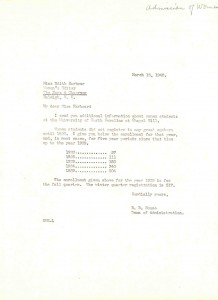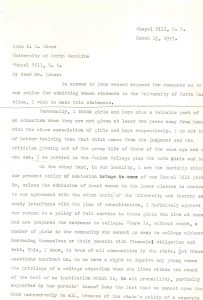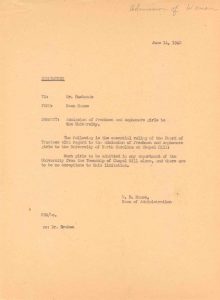We hope that everyone is enjoying the new semester. Hopefully you’re getting back into the swing of things without too much trouble. If everything is going well, congratulations! It turns out that you are much luckier than some of your predecessors in the winter of 1929 were.
In fact, from the very beginning of the school year, various fraternities on UNC’s campus had some pretty rotten luck. First, there were growing financial concerns and then the great stock market crash of 1929. Male students were in the position of not being able to afford being in a fraternity unless they took out a loan. Despite all of this, though, fraternities accepted a healthy number of bids that fall semester, and luck seemed to be on their side.
Their luck ran out, however, at the end of the fall semester. On Thursday, December 12, 1937 (a day before Friday the 13th), the Delta Sigma Phi house of Old Fraternity Row was almost completely destroyed in a fire early that morning. When the members of the house woke up and realized the house was on fire, they attempted to call the fire department but could not be connected because the fire chief was already having a conversation of his own. Consequently, several members had to drive down to the station to alert the chief in person. At the time, the chief said that he heard a car beeping its horn like mad and immediately thought it was a rum runner being chased by the authorities. By the time the fire was extinguished, most clothes and furniture could be saved, and it was lucky that the nine men sleeping in the house had escaped with their lives.
Delta Sigma Phi did not hold the distinction of being the only fraternity house that burned down that year though. The Daily Tar Heel was beginning to make daily quips about old fraternity row as the “hot section of town.” The Chi Psi fraternity house also burned down that winter, on Christmas night. Unfortunately for the members of Chi Psi, they were accused (rather indirectly and hastily) of setting the fire deliberately to collect the insurance money. The controversy raged until January 8, 1930 when the students were finally freed from blame of the fire. In fact, Dr. Coker took great umbrage at the suggestion that any student at Carolina would be so devious and squared off with the insurance commissioner until the whole matter was cleared.
So, count yourself lucky. If you are rushing a fraternity or sorority this semester, we are certainly glad that lady luck seems to have reinstituted herself on our campus!

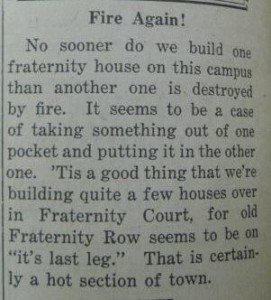
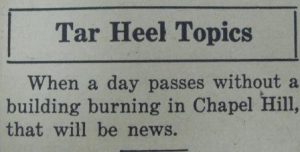
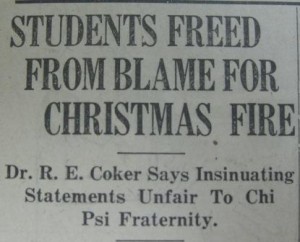
 The early history of UNC’s controversial “Silent Sam” statue will be the topic of a free public lecture Jan. 22 at the Wilson Special Collections Library at UNC.
The early history of UNC’s controversial “Silent Sam” statue will be the topic of a free public lecture Jan. 22 at the Wilson Special Collections Library at UNC. 